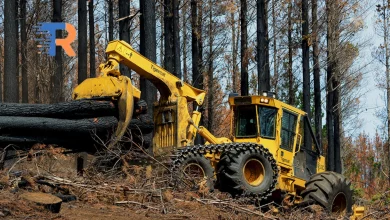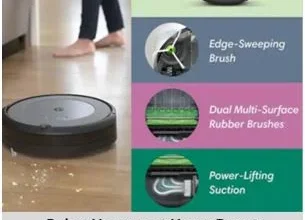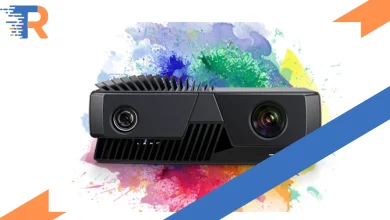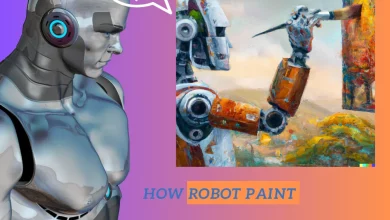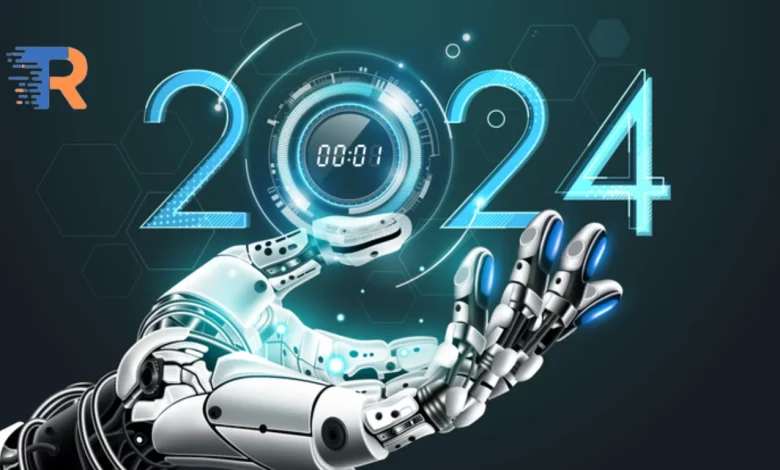
Stepping into the realm of Robotics Industry Trends of 2024 necessitates a contemplation of how the persistent wave of generative AI will further reshape the landscape of robotics. A predominant force in 2023, generative AI is poised to deepen its imprint this year, becoming an even more integral aspect of the robotics narrative.
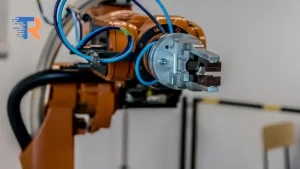
The evolution of language models, exemplified by the prowess of interfaces like ChatGPT, transcends the confines of IoT. A new wave of tools is set to emerge, marrying the strengths of natural language processing with the perceptual acuity of hardware. Brandon Minor, co-founder and CEO of Tangram Vision, envisions this fusion as an engineering marvel, adding a layer of enchantment to tech demonstrations.
1. Balancing Act : Robotics Industry Trends of 2024
However, this fusion could unravel a delicate dance. The external pressure for robotic systems to transition from specialization to a more generalized approach might introduce unforeseen challenges in the deployment of collaborative robotics suites. As Minor suggests, the risk lies in systems designed for specificity feeling the tug of overnight generalization, akin to a hammer treating everything as a nail.
2. Accelerated Learning Curve :
Researchers and developers have already harnessed the power of GenAI to accelerate the learning curve for robots in mastering complex manipulation tasks. This trajectory of research is expected to persist in 2024, with potential applications making their debut in the realm of commercial robotics.
3. Personifying Machines :
A unique facet of generative AI lies in its ability to infuse robots with a more personable demeanor. By enabling robots to comprehend natural language instructions, GenAI opens the door to a realm where machines become adept at understanding and responding to human interactions. The transformation witnessed in 2023, where Boston Dynamics turned a Spot quadruped into a tour guide using ChatGPT, is a precursor to the numerous projects expected to unfold in the coming year.
4. A Shift in Paradigm :
Observing this landscape, Amir Bousani, co-founder and CEO of RGo Robotics, notes a profound shift within the robotics industry. Historically anchored in hardware, the industry is now turning its gaze toward software. GenAI applications, he believes, will play a pivotal role in this paradigm shift, with the potential to permeate the industry within the next five years. As Bousani envisions, when GenAI reaches critical mass, mobile robots could exhibit more sophisticated navigation behaviors, driven by interactions with their environment.
In this unfolding saga of innovation, 2024 beckons as a pivotal chapter where the symbiosis of generative AI and robotics continues to weave a narrative of transformation, pushing boundaries, and reshaping the very fabric of human-robot collaboration Robotics Industry Trends of 2024.
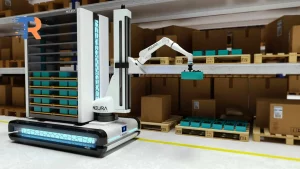
5. Robots get-out of the warehouse into new roles
Automotive Borders Robotics Industry Trends of 2024 :
The tale of robots has extended-out there the limitations of automotive manufacture, permitting for a wide range-of-professions. Robots are no longer limited to gathering lines; they may now be seen in a wide range of situations, including grocery stores, warehouses, and even the fast-food industry.
A Generative Leap Forward :
The catalyst propelling this transformation is the infusion of generative AI. This technological leap enables robots to transcend mere functionality and engage with people in a more natural manner. As we step into the coming year, the synergy between generative AI and robotics promises a paradigm shift, especially in roles that bring robots to the forefront of public interaction.
Unleashing the Robot Renaissance :
Adam Rodnitzky, co-founder and chief operating officer of Tangram Vision, envisions an imminent acceleration of robots into public settings. Sidewalk delivery, the bustling environments of restaurants (both front and back of house), the efficiency hubs of hotels, the precision-required spaces of hospitals, and the logistical challenges of parking lots – all become stages where robots are set to make a more prominent entrance.
Maturing Startups and Reliable Fleets :
The unfolding of this robotic renaissance owes much to the maturation of startups catering to these diverse markets. As Adam Rodnitzky notes, the pivotal moment arrives when these startups achieve a level of maturity that allows them to deliver reliable fleets, seamlessly integrating robots into the dynamic tapestry of public spaces.
In this narrative of evolution, the year 2024 emerges as a threshold where robots, propelled by generative AI and guided by the maturation of startup endeavors, step boldly into new realms, becoming not just functional entities but interactive companions in our everyday spaces.
Mobile Robot will Expand in 2024
From Nascent to Flourishing :
In a span of just a few years, autonomous mobile robots (AMRs) have transformed from a hesitant, nascent technology to a thriving $20.3 billion industry, as reported by Markets & Markets. This meteoric rise foretells a trajectory that is projected to reach $40.6 billion by 2028, showcasing the monumental growth and acceptance of these robotic companions across industries.
A Decade of Evolution :
Reflecting on the past decade, Rasmus Smet Jenson, Vice President of Marketing and Strategy at Mobile Industrial Robots (MiR), notes the transformative journey of AMRs. From the initial years marked by enthusiasts testing single robots, the landscape has evolved dramatically. Today, companies spanning diverse industries are deploying large fleets of robots into the core of their production processes.
Warehouse Roots and Beyond :
While automated guided vehicles (AGVs) and AMRs found their early position in warehouses, mostly rearrangement the movement of goods for order-fulfillment, the story is composed for a transformative shift in 2024.
Embracing Unstructured Terrains :
The horizon of 2024 promises a departure from the warehouse-centric paradigm. Mobile robots, once confined to the structured environment of storage facilities, are breaking free and venturing into more unstructured realms. Airports emerge as dynamic spaces where these robots can deliver goods seamlessly to travelers awaiting departure.
Outdoor Adventures :
Beyond the confines of indoor spaces, mobile robots are carving a niche in outdoor environments. The green expanses of lawns witness the efficient choreography of robotic lawn mowers, while the agricultural landscapes of farms see these robots transporting produce with precision. The foray into outdoor settings heralds a new era where mobile robots become versatile companions beyond the walls of warehouses.
In the unfolding chapters of 2024, the journey of Robotics Industry Trends of 2024 is not just an extension of their warehouse roots but a dynamic exploration of uncharted territories, both in the bustling environments of airports and the serene landscapes of outdoor realms.
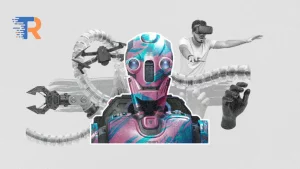
Robotics Developers Embrace a New Language in 2024
- A Kernel Catalyst :
The statement by Linux’s-luminary, Linus Torvalds, in September 2022, indicated an important shift as the Rust-programming language found its place in the upcoming Linux-6.1-kernel. This pivotal moment not only marked a departure from the dominance of C in programming protocols but also opened new avenues for robotics developers seeking a robust language foundation.
- Evolution of Rust :
The journey of Rust has been marked by continuous evolution. Developers have diligently added new features, enhancing its security and functionality. As the tech landscape transitioned into 2023, Rust positioned itself for a potentially profound impact on the field of robotics.
- Inherent Virtues for Robotics :
Tangram Vision’s Rodnitzky identifies Rust’s inherent memory safety and management as key attributes aligning seamlessly with the intricacies of the robotics domain. While Rust has been on the periphery of roboticists’ endeavors, there is a noticeable surge in enthusiasm for broader adoption within the robotics community.
- Scythe Robotics Paves the Way :
The momentum behind Rust’s integration gains traction with notable players like Scythe Robotics adopting it as their language of choice. The ripple effect extends to a burgeoning landscape of active development projects, reflecting a growing community pushing the boundaries of Rust’s applications in robotics.
- ROS Framework Integration :
A noteworthy trend is the rise of Rust within the Robot Operating System (ROS) framework. Working groups and projects rooted in ROS witness a substantial uptick in participation and adoption, signifying a broader embrace of Rust within the intricate fabric of robotic development.
As the year unfolds, 2024 promises to be the epoch where the Rust revolution in robotics reaches its zenith. With a kernel endorsement, evolving features, and the backing of influential players like Scythe Robotics, Rust emerges not just as a programming language but a transformative force shaping the future language of Robotics Industry Trends of 2024.


